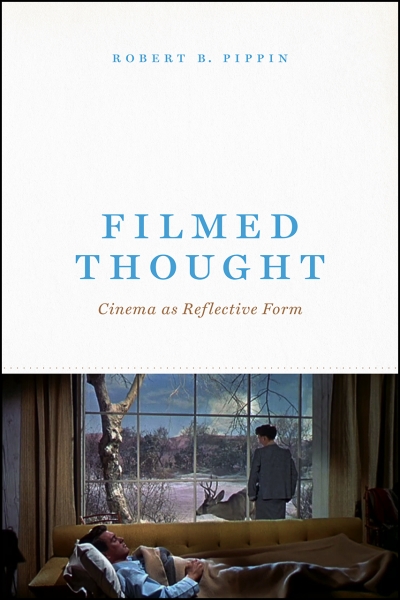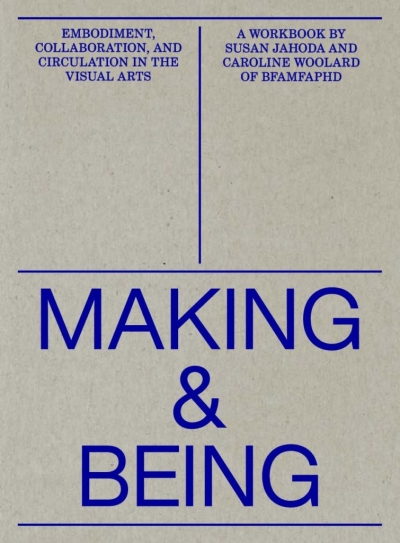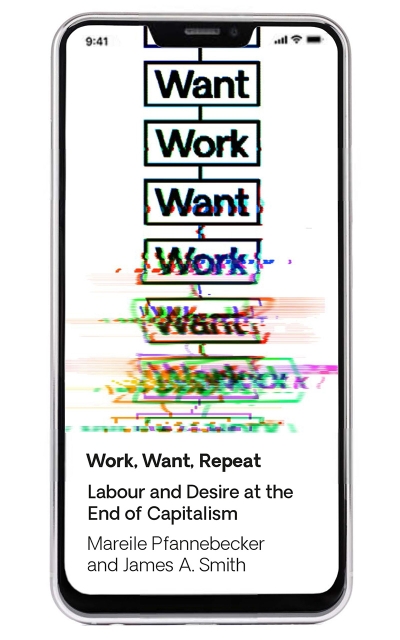HfG-Archiv Museum Ulm, Katharina Kurz,…
Nicht mein Ding − Gender im Design
Clog
Clog 17. Cannabis
Frédéric Gros
Disobey! A Philosophy of Resistance
Hal Foster
What Comes after Farce?
Tim Bergfelder, Erica Carter, Deniz…
The German Cinema Book (second edition)
Dieuwertje Hehewerth
Salticidae Icius - a Research on Independent Art Spaces and…
Sruti Bala
The gestures of participatory art
Christopher Sweetapple, Hein-Jürgen Voß…
Intersektionalität. Von der Antidiskriminierung zur…
Anneke Lubkowitz (Hg.)
Psychogeografie
Florian Hertweck (Hg.)
Architektur auf gemeinsamem Boden. Positionen und Modelle…
Roger Paez
Operative Mapping. Maps as Design Tools
Silvia Federici
Jenseits unserer Haut. Körper als umkämpfter Ort im…
Dóra Hegyi, Zsuzsa László, Franciska…
Creativity Exercises. Emancipatory Pedagogies in Art and…
Bill Balaskas, Carolina Rito (Eds.)
Institution as Praxis
Julian Hanna
The Manifesto Handbook. 95 Theses on an Incendiary Form
Sandra Teitge (Hg)
Goethe in the Skyways
Samantha Hardingham (ed.)
Cedric Price Works 1958 - 2003. A Forward-Minded…
Markus Krajewski, Harun Maye (Hg)
Universalenzyklopädie der menschlichen Klugheit
Matt Anniss
Join the Future. Bleep Techno and the Birth of British Bass…
Milo Sweedler
Allegories of the End of Capitalism. Six Films on the…
HfG Ulm (Hg.)
Hans Gugelot: Die Architektur des Design
David Rattray
How I Became One of the Invisible (New Edition)
Sarah T. Roberts
Behind the Screen. Content Moderation in the Shadows of…
Jessica Bruder, Dale Maharidge
Snowden’s Box. Trust in the Age of Surveillance
Jungmyung Lee, Lieven Lahaye (eds.)
Real-Time Realist #2: Typefaces don't care, Typefaces…
Oliver Ruf, Stefan Neuhaus (Hg.)
Designästhetik. Theorie und soziale Praxis
Yasha Levine
Surveillance Valley. The Secret Military History of the…
Sandra Umathum, Jan Deck (Hg)
Postdramaturgien
Natasha Stagg
Sleeveless. Fashion, Image, Media, New York 2011-2019
Kübra Gümüsay
Sprache und Sein
Christine Schranz
Augmented Spaces and Maps. Das Design von kartenbasierten…
IDEA Magazine
IDEA 389. Feminist Moments: Thoughts on graphic design…
Patrick Cowley
Mechanical Fantasy Box: The Homoerotic Journal of Patrick…
Ted Gioia
Music - A Subversive History
Ernst Hubeli
Die neue Krise der Städte
Mike Davis, Jon Wiener
Set the Night on Fire - L.A. in the Sixties
Marietta Kesting, Maria Muhle, Jenny…
Hybride Ökologien
Pablo Sendra, Richard Sennett
Designing Disorder. Experiments and Disruptions in the City
Annette Michelson, Kenneth White (Eds.)
October Files 24: Michael Snow
Isabelle Sully (Ed.)
Ruth Wolf-Rehfeldt: Introverse Arrangements
Bryndís Snæbjörnsdóttir, Mark Wilson,…
Beyond Plant Blindness : Seeing the Importance of Plants…
George F.
Good Times in Dystopia
Nathaniel Coleman
Materials and Meaning in Architecture
Marion Hohlfeldt, Frank Popper
GRAV : Groupe de Recherche d'Art Visuel "…
Marilyn Chase
Everything She Touched. The Life of Ruth Asawa
Robert B. Pippin
Filmed Thought. Cinema as Reflective Form
Bernd M. Scherer (Hg.)
Paris Calligrammes. Eine Erinnerungslandschaft von Ulrike…
Jennifer Clark
Uneven Innovation. The Work of Smart Cities
David Scheller
Demokratisierung der Postdemokratie. Städtische soziale…
Nezar AlSayyad, Mark Gillem, David…
Whose Tradition? Discourses on the Built Environment
Sally Stein
Migrant Mother, Migrant Gender
Jörg Johnen
Marmor für alle. Zur Kunst im öffentlichen Raum in Berlin
Oreet Ashery (Ed.)
How We Die Is How We Live Only More So
Ben Kafka
The Demon of Writing. Powers and Failures of Paperwork
Sandra Hofmeister (Hg.)
Snøhetta: Architektur Und Baudetails / Architecture and…
Steffen Damm, Lukas Drevenstedt
Clubkultur. Dimensionen eines urbanen Phänomens
Volker Pantenburg (Hg.)
Harun Farocki. Ich habe genug!
David Joselit
Heritage and Debt. Art in Globalization
Carrie Noland
Merce Cunningham. After the Arbitrary
Didier Eribon
Betrachtungen zur Schwulenfrage
Susan Jahoda, Caroline Woolard
Making and Being: Embodiment, Collaboration, and…
Bill Gaver, Phoebe Sengers
The Presence Project. Computer Related Design Research…
KW, ZK/U (Hg.)
Statista. Staatskunst am Haus der Statistik
Germaine R. Halegoua
Smart Cities
Alain Badiou
The Pornographic Age
Christina Thomson (Hg.)
Das Grafische Atelier Stankowski + Duschek
Divya Victor
Scheingleichheit. Drei Essays
Mona Chollet
Hexen. Die unbesiegte Macht der Frauen
Andrea Long Chu
Females. Everyone is female, and everyone hates it
Mareile Pfannebecker, James A. Smith
Work Want Work. Labour and Desire at the End of Capitalism
Matthew J. Wolf-Meyer
Theory for the World to Come. Speculative Fiction and…
Dan Byrne-Smith
Science Fiction
Will Schrimshaw
Immanence and Immersion. On the Acoustic Condition in…
Anette Baldauf
Spaces of Commoning: Artistic Research and the Utopia of…
Genesis Breyer P-Orridge, Carl…
Genesis Breyer P-Orridge. Sacred Intent. Conversations with…
Architecten De Vylder Vinck Taillieu
Variete / Architecture / Desire
F. Laranjo, L. Prado, P. Oliveira, ACED…
Modes of Criticism 5. Design Systems
Miodrag Kuc (Ed.)
Hacking Urban Furniture. HUF
Constantine Verevis
Flaming Creatures
Cornelius Cardew
Stockhausen Serves Imperialism
Rebecca Coleman
Glitterworlds. The Future Politics of a Ubiquitous Thing
McKenzie Wark
Reverse Cowgirl
Laura Kurgan, Dare Brawley (Ed.)
Ways of Knowing Cities
Jonathan Fardy
Althusser and Art
Thomas Piketty
Kapital und Ideologie
Claudia Blümle, Claudia Mareis,…
Visuelle Zeitgestaltung
Yanni Alexander Loukissas
All Data Are Local. Thinking Critically in a Data-Driven…
Eileen Myles
Chelsea Girls
Kunsthaus Bregenz
Ed Atkins
Daniel Martin Feige, Florian Arnold,…
Philosophie des Designs
Nancy Fraser, Rahel Jaeggi
Kapitalismus. Ein Gespräch über kritische Theorie
Silvia Federici
Beyond The Periphery Of The Skin. Rethinking, Remaking,…
João Carmo Simões
Gulbenkian. Photography by André Cepeda
Mateo Kries, Jochen Eisenbrand (Hg.)
Home Stories. 100 Jahre 20 visionäre Interieurs
Silvia Federici
Die Welt wieder verzaubern. Feminismus, Marxismus &…
Ilka and Andreas Ruby (Ed.)
The Materials Book
Daniela Comani
Planet Earth: 21st Century
Judith Butler
The Force of Non-Violence. An Ethico-Political Blind


































































































